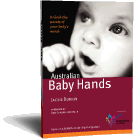The Balance Between Practical & Motivational Signs
Are you a parent who has introduced baby sign language into your home but you are not seeing the results you anticipated?
After reading about the research and benefits of baby sign language, many parents decide to introduce this communication tool into their home. New parents are often very enthusiastic, ensuring that there is consistency with the signs and sometimes getting all family members involved.
However if after several months of effort parents have still not seen that “first sign” they can often get discouraged.
Questions and thoughts arise such as:
– Were we consistent with our signing?
– Did we encourage others to sign with our baby?
– Was our use of baby sign language in context?
– When we signed was it at our baby’s level?
– Were we encouraging enough of our baby’s attempts?
– Did we use appropriate facial expressions when signing?
– Did we have fun?
For parents who have followed all the steps mentioned above what has gone wrong? Why is their baby not communicating using baby sign language?
One of the most common reasons for a baby not signing is linked to the balance between practical and motivational signs.
Some parents when they begin to introduce baby signing into their home use signs that will help them understand their baby and reduce frustration for all. “Practical” signs include things such as eat, drink, change or sleep. While these signs are very useful they may not be the most exciting ones for your baby to learn.
What is your baby interested in, what “motivates” them? Maybe they like a particular toy, the family dog or a book.
Try signing to your baby about something they are really interested in. When their attention is focused on something that they really want their response to signing can be increased.
By ensuring that you mix “practical” signs with “motivational” signs you will heighten your baby’s interest as they begin to realise the link between signing and the things they are interested in.
The best advice I can give you is to be patient and not give up. I have had parents tell me that they were waiting over six months for a sign but when it happened, it was the most exciting and rewarding experience.
Once this first sign occurs, remember to encourage your baby’s attempts and look at introducing some additional practical and motivational signs into your baby’s vocabulary.
Happy Signing and as always, have fun! ?
- Please feel free to re-publish this article on your website including the authors bio details below in full.
Article written by Jackie Durnin:
Jackie Durnin Author of
Australian Baby Hands shares more tips in her articles at her site https://www.australianbabyhands.com/. Visit and download your own free baby signing chart.
